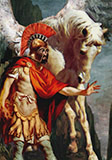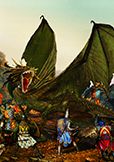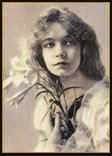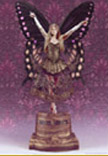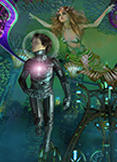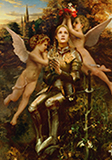

Presents: A Contemporary Mythical Art Gallery:
Legends of Cú Chulainn; A Gallery of New Gaelic Celtic Themed Artwork.

Paintings, Drawings and Pictures~ Illustrations depicting Celtic Mythology in traditional oil paints, Contemporary acrylics, colored pencils and today's digital media in a style inspired by classic illustrators.



"Cu Chullain's War Chariot!"

" The Scorn of the Morrigan"

"Cú Chulainn's single combat with Fer Diad
Cu Chulainn is one of the most famous Irish mythological heroes. He appears in the stories of the Ulster Cycle, and Scottish and Manx folklore. Son of Deichtine and the god Lugh, and the nephew of Conchobar mac Nessa, the King of Ulster. He was born Sétanta, a young boy with great potential. but he gained the name Cu Chulainn, meaning ‘Culann’s Hound’ after he killed a ferocious guard dog belonging to a smith named Culann. Cu Chulainn offered to take the place of the guard dog until a replacement could be reared. Cú Chulainn, with the responsibility as the hound of Ulster, or its protector, was left to single-handedly defend the land...

"Cú Chulainn, awaiting single combat with one of Queen Maeve's (Madb) challengers"
The Red Branch Knights served Concobar mac
Nessa, king of Ulster, a
province of ancient Ireland.
The
greatest Red Branch commander was Cú Chulainn, a demigod, the mightiest of the heroes of Irish romance. The
other chief heroes were Conall Kernach; Laegaire (or Laery) the
Victorious; Keltar of the Battles and Fergus mac Roy.
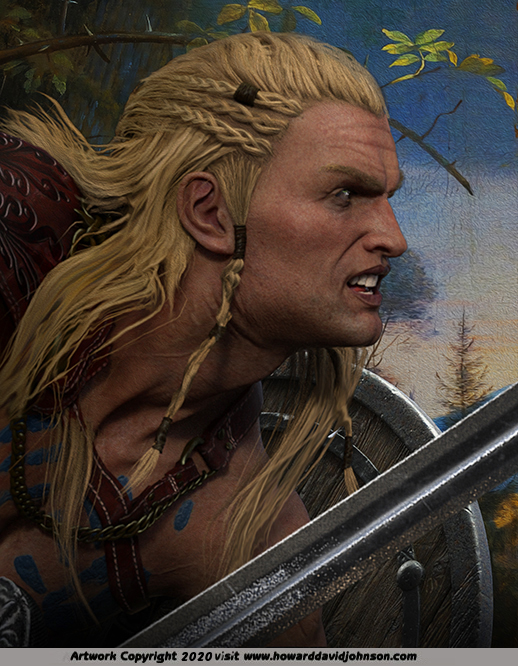
"Cú Chulainn, Lion of Ulster, Son of Lugh, Champion and Paladin of Emain Macha"


Cú Chulainn notably appears in Tochmarc Emire (The Wooing of Emer), called the Irish Iliad, it was an ancient folk tale preceding the great epic Táin Bó Cúailnge. (The Cattle raid of Cooley) In it, Cú Chulainn was said to be so beautiful and highly skilled that the women were unable to control themselves and it was decided he must marry as soon as possible. None of the choices brought before him were to his liking so he set out to find a bride on his own.

After much searching, Cú Chulainn heard of Emer, who he hoped would meet his standards. She was noble daughter to the Chieftain Forgall Monach, who was very protective of her. Forgall tried to pair Cú Chulainn with his oldest daughter Fial, whom he had already pledged in marriage to Carpre Niafer but Cú Chulainn refused her. Forgall did not want him to marry Emer. Emer possessed the six gifts that made her ideal for her time. They were beauty, wisdom, chastity, voice, sweet speech, and needlework. Cuchulainn set out to pay Emer a visit...

"The Wooing of
Emer"

"Emer, wife of Cú Chulainn & noble daughter of Chieftain Forgall the Clever"

"Cú Chulainn wooing Emer"

"Forgall tries to deceive CúChulainn"

"Cú Chulainn finds favor in Emer's Eyes"

"The Search for Scatha"
Aided Óenfhir Aífe or The Death of Aífe's Only Son
Forgall quickly arranged for Emer to marry the King of Munster, a man named Lugaid. The wedding feast was arranged, and all was ready, but when Emer came out to meet her bridegroom, she took his face between her two hands and said to him “I love Cuchulainn, and Cuchulainn loves me.

"Aoife the Amazon, Sister of Scatha"
"Scáthach's twin sister Aoife [pr. EE-fa] or Aífe was at war with her when Cú Chulainn came to train on the isle of Skye. He fought Aoife and bested her in combat and then became her lover and she bore a son, Conlaoch [conn ”chief” + laoch ”hero” ] or Connla. Aided Óenfhir Aífe (English: The Death of Aífe's Only Son) is a story from the Ulster Cycle of Irish mythology. In Aided Óefhir Aífe their son Conlaoch, at the age of seven, comes to Ireland in search of his father, following Cú Chulainn's instruction not to identify himself.
In spite of Forgall's protests, Lugaid left. Cú
Chulainn came and claimed her by force of arms and in the conflict her father
was killed. Emer mourned her father, but as Cuchulainn had not actually killed
him she did not hold it against him. His death was accidental, and his own
fault.
So the two of them were married, and proved to be well-suited. They were equal to one another in wit and wisdom, and while Cuchulainn was often away with battles and feats of arms, and spent time with other women, Emer was not jealous, because she knew he would always return to her except one time... but that's another story...
The Search for Scatha, Master of War and goddess of Death
Scatha, Scáthach (Scottish Gaelic: Sgàthach, Scathach, ) was the most fearsome warrior woman of old Irish legend. Her name means “the shadowy one” in Gaelic and she trained great soldiers at her school for heroes.
In the legends, dying while training with Scáthach wasn’t at all unusual. Scáthach’s training was notoriously intense as she taught skills like pole vaulting over castle walls and underwater fighting. If her trainees didn’t survive her regimen, then her charges simply weren’t worthy.
"The Warrior Maid" was also the rival and sister of Aífe, both of whom are daughters of Árd-Greimne of Lethra; If you wanted the honor of training with her, first you had to find her. Indeed, before any warriors could even ask Scáthach for help, they had to first find and then reach her domain.
Finding Scáthach?
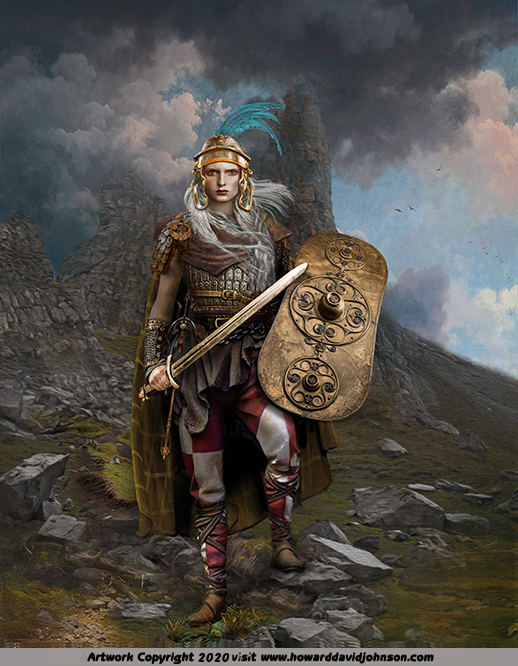
Scáthach ~ teacher of fighters on the Isle of Skye
Scáthach was also a formidable magician with the gift of prophecy. She became the Celtic goddess of the dead, ensuring the passage of those killed in battle to Tír na nÓg, the Land of Eternal Youth and the most popular of the Otherworlds in Celtic mythology...
Kings and princes who wanted to get there had to cross the Irish Sea, known for its deadly storms and choppy waters, eastward or navigate the cold waters of the Atlantic northward along the craggy islands of western Scotland.
Scáthach's instruction of the young hero Cú Chulainn; In Ireland’s mythological epic, the Táin Bó Cúailnge, it was said of him:
"You will not encounter a warrior harder to deal with, nor a spear-point sharper or keener or quicker, nor a hero fiercer, nor a raven more voracious, nor one of his age to equal a third of his valour.

"Cú Chulainn and Aoife at ALBA"

" Scátha" (close-up)
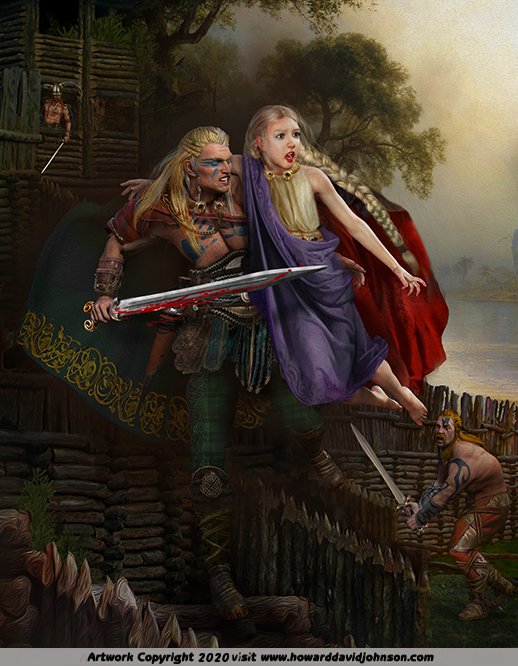
"Cuchulain takes Emer by Force"
![Tain bo Cuailnge Chulainn takes Emer by Force [close-up] painting art celtic mythology ulster saga](Cu_Chulainn_takes_Ener_by_Force_detail.jpg)
Cú Chulainn takes Emer by Force" [detail]

"Cuchulain the Giant Slayer"
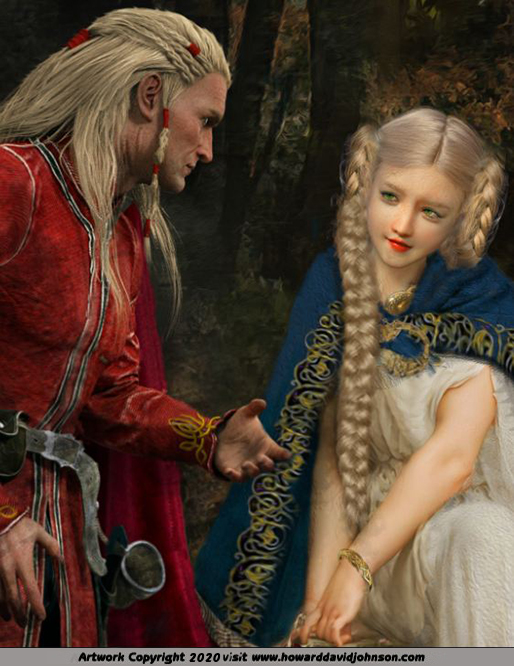
"Cú Chulainn wooing Emer" [detail]"

or "The Cattle Raid of Cooley"

" The Great Battle between the forces of Ulster and Connacht"
The Táin or Táin bo Cuailnge tells of a war against Ulster by Queen Medb of Connacht and her husband King Ailill, who determined to steal the prize stud bull Donn Cuailnge. Due to a curse levied upon the king and warriors of Ulster by Macha, the invaders are opposed only by the young demigod, Cú Chulainn.

The CURSE of MACHA
When Macha was pregnant she had a conversation with the king of Ulster and Cruind boasted that Macha could outrun any horse. The king demanded to see this put to the test despite the protestations of Macha.

Lone Defender of EMAIN MACHA
EXCEPT Cú Chulainn, who stood alone against an army...

" Cú Chulainn Stands alone for ULSTER "
![Cuchulainn ambushed by Medb [mave] celtic mythology painting artwork](Queen_Mave_surprises_Cuchulainn.jpg)
"Queen Mave betrays Cú Chulainn"

"Cú Chulainn ambushes the Charioteers "
The Beautiful Queen Medb of Connaught
The Book of the Dun Cow, the Book of Leinster, and other old manuscripts tell romantic stories about those Red Branch Knights, and about the Knights of Munster and Connaught. The most celebrated of all these tales is what is called the Táin Bó Cúailnge or "Cattle spoil" of Cooley. The saga begins with pillow talk; The incredibly beautiful Queen Medb and her husband King Ailill boasting about their resources and him pointing out Medb lacks a bull to match Finnbennach Ai, the White-Horned, of Ailill’s herd. Medb tries to aquire Donn Cuailnge, a fabulous Brown Bull from Dáire mac Fiachna, but fails when her men are overheard saying Medb would take the bull by force if necessary.Queen Medb of Connaught, having some cause of quarrel with an Ulster chief, set out on a plundering expedition, attended by all Connaught's great heroes including Ulstermen in exile headed by Fergus mac Roich.

"Queen Medb's Druid foretells the Future "

" The Beautius Queen Mave ( Medb)"

"King Ailill Wounds Queen Medb's Pride "

"Queen Maive of Connaught" [Mave]
Her promised rewards included gold, lands and even the hand of her lovely daughter in marriage.

"The Golden Diadem of Queen Medb"

"Cu Chulainn in his War Chariot"
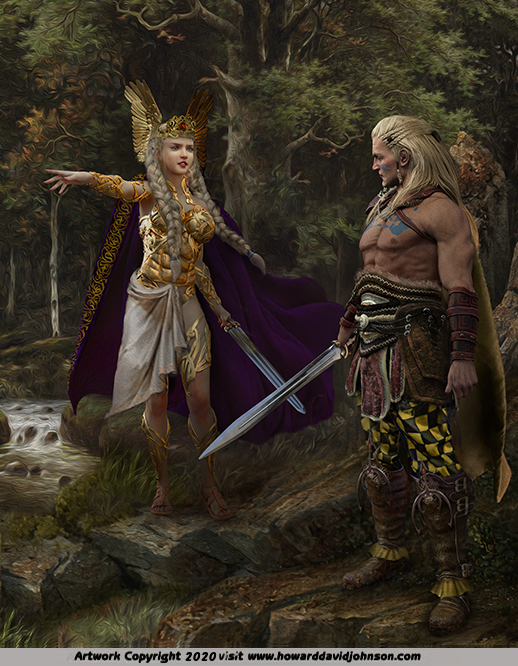
"Queen Maeve parlays with Cu Chullain"
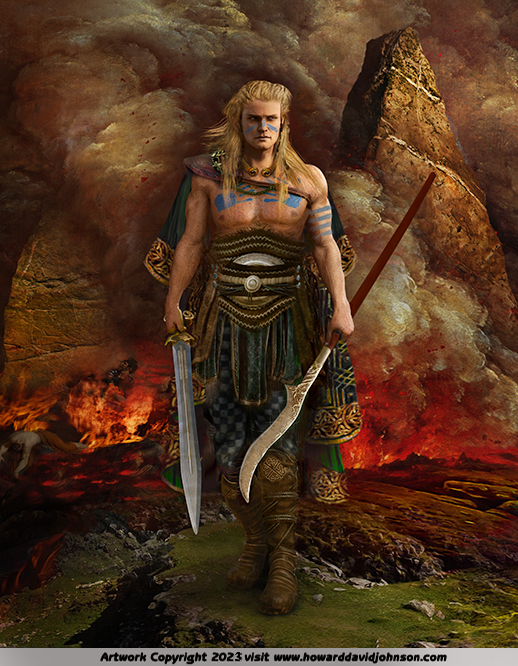
"Cu Chulainn, Son of Lugh"
The Heroes of Ulster have little to do with fairyland, but their enemy, Medb, [Madb or Mave] is credited with Queenly rule among the Sidhe (Fairies) and is held by some to be the original "Queen Mab" The invading army entered Ulster when the men were under a spell of feebleness, all but Cuculainn, who had to defend single-handed the several fords and passes, in a series of combats against Maive's best champions, in all of which he was victorious. But, in spite of what he could do, Queen Maive carried off nearly all the best cattle and, at their head, a great brown bull which indeed was what she chiefly came for. At length the Ulstermen, having been freed from the spell, attacked and routed the Connaught army. The battles, single combats, and other incidents of this war are related in the Tain, which consists of one main story, with about thirty minor tales grouped round it.

"The Death of Fer Diad"

"The Fury of Cú Chulainn"

"Cu Chulainn ambushed by Medb"
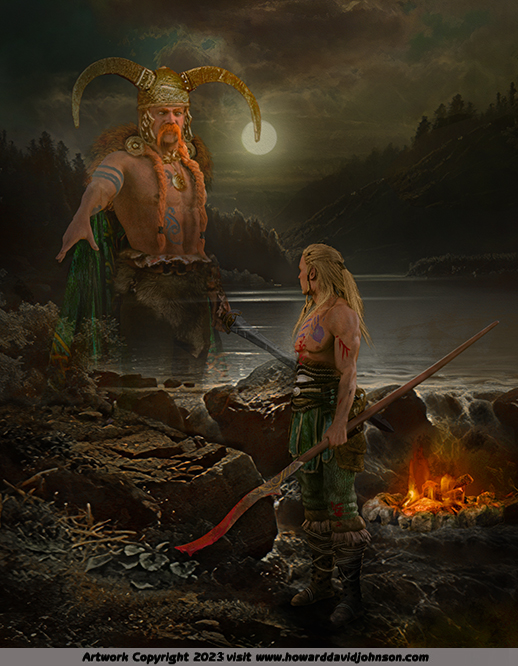
"Lugh visits Cu Chulainn by Night"
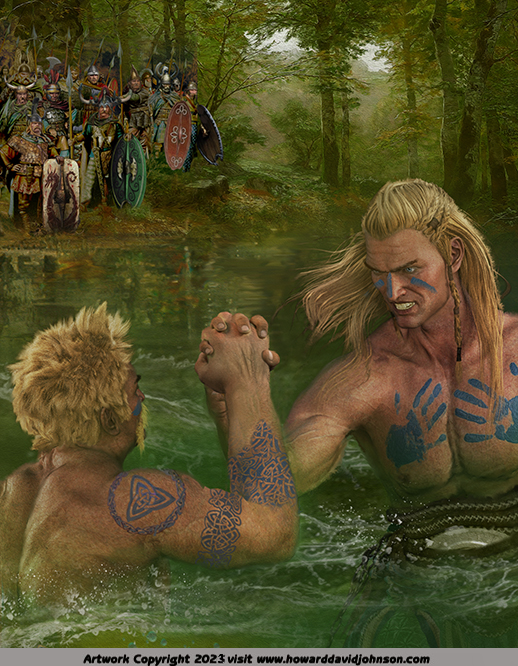
"Cú Chulainn wrestles Fraech Mac Fidach in the Ath Fuait River"

"Queen Medb’s Champion"




"The Final Battle at Garech"
The Turning of the Tide; At The Great Battle of Garech, Fergus sheaths his sword and withdraws his men because of an oath he made to Cu Chulainn when he earlier had saved his life. Many other forces left the field with Fergus leaving only the armies of Medb and Ailill and their seven sons to face the combined might of the forces of Ulster.
An Edition straight from the Golden Age of Illustration~ A Dream come true from Easton Press...

info@howarddavidjohnson.com
Your business, letters, & links are always welcome.
*************************************************************************************

The story of Fairy Queen Fand, Emer's only true rival for Cú Chulainn's affections...
*************************************************************************************

"Fand, the Queen of Faeries"

"Fairy Queen Fand, the Otherworldly Woman"

"Fand ~ Emer's only Jealousy"
After Emer has shamed him for allowing a woman's love to weaken him, Cú Chulainn travels with Liban, defeats Fand's enemies, and stays with her for a month. When he returns to Ireland he arranges a tryst with her, but Emer finds out and sharpens a knife, intending to kill Fand, but when she sees the strength of Fand's love she offers to give her up husband to her. Fand is so impressed by Emer's magnanimity that she gives up her claim on Cú Chulainn and returns to her husband.

"The Only Jealousy of Emer"
Emer's hope to win back Cuchulain's love for her during her initial inability to give up hope of winning back his love, and through to her final renunciation of his love, the depth of her love and the extent of her sacrifice is shown. By renouncing the love of her life, Emer proves herself to be a sublime and superior heroine.
Instead of being the jealous wife seeking vengeance for herself, she is jealous only for her husband's well-being.


"Cú Chulainn & the three one-eyed hags"
"The Death of Cú Chulainn" [detail]

"The Death of Cú Chulainn"
So fell Cú Chulainn, King among Warriors.
"There
are more
than 34.5 million U.S. citizens of Irish ancestry, nine times the
population of Ireland. Irish is the second-most common ancestry among
Americans, just behind Germanic. I started creating these
illustrations to
share my Gaelic Celtic heritage with my children. This gallery is
dedicated to my kinsmen, to kindred
spirits everywhere, and to our children, and to our children's,
children's, children..."

If you enjoyed this exhibit you might want to visit this one too~
Popular retellings of the Cú Chulainn legends include Lady Gregory's Cuchulain of Muirthemne (1902) and Eleanor Hull's The Boys' Cuchulain, were published, and William Butler Yeats wrote a series of plays, On Baile's Strand (1904), The Green Helmet (1910), At the Hawk's Well (1917), The Only Jealousy of Emer (1919) and The Death of Cuchulain (1939), featuring the hero. More recent literary retellings of Cú Chulainn's story include Morgan Llywelyn's 1989 historical novel Red Branch, Rosemary Sutcliff's children's novel The Hound of Ulster (1963), and in The Ulster Cycle (2002-13) Randy Lee Eickhoff translates Ireland's ancient mythology into vital, accessible and novelistic retellings.
|
Enter a world of Beauty and Imagination...
INDEX of GALLERIES ~
LINKS to LARGER ART The Realistic and Fantastic Art Galleries of Contemporary American Illustrator Howard David Johnson Click on these Fun Educational Realistic Art Gallery link icons for Two-fisted Tales of VALOR & Frontline Combat featuring Legendary Warriors of History, Knights and ladies of Arthurian Legend, Celtic, Nordic, Asian and Olympian gods & monsters, unicorns, dragons, fairies... and more! All these pieces of art and the text are legally copyrighted and were registered with the U.S. Library of Congress Office of Copyright by the author, Howard David Johnson All rights reserved worldwide. Permission for many academic or non-commercial uses is freely and legally available by simply contacting the author via e-mail or visiting www.howarddavidjohnson.com/permission.htm |
|
This Art Gallery has been honored by more than 40,000,000 unique visitors from the Four Corners of the Earth: My Friends from around the world thus far : Ireland, Scotland, Wales, Germany, England, Canada, France, Monaco, Andorra, Italy, The Vatican City State, Greece, Macedonia, Cyprus, Turkey, Belgium, Denmark, The Faroe Islands, Greenland, Yugoslavia, Macedonia, Croatia, The Czech Republic, Bosnia, Herzegovina, Slovakia, Slovenia, Luxembourg, Latvia, Estonia, Hungary, Bulgaria, Lithuania, Poland, Austria, Romania, Spain, The Russian Federation, Ukraine, Kazakhstan, Moldova, Malta, Iceland, Finland, Norway, Netherlands, Switzerland, Liechtenstein, Sweden, Portugal, Albania, Armenia, Georgia, Azerbaijan, Belarus, Kazakhstan, Gibraltar, Israel, Palestinian Territories, Egypt, Libya, Mali, Algeria, Niger, Saudi Arabia, Oman, The United Arab Emirates, Kuwait, Bahrain, Qatar, Yemen, Iraq, Iran, Jordan, Syria, Lebanon, Morocco, Ethiopia, Eritrea, Liberia, The Republic of Congo, Rwanda, Kenya, Angola, Ghana, The Ivory Coast, Zambia, Zimbabwe, Sudan, Nigeria, Namibia, Uganda, Kenya, Eritrea, Tanzania, Botswana, Malawi, Senegal, Djibouti, Cameroon, Chad, Gambia, Mozambique, Swaziland, Lesotho, Cuba, Jamaica, Dominica, Haiti, Puerto Rico, Cayman Islands, Anguilla, The Bahamas, Honduras, Mexico, Chile, Argentina, Uruguay, Paraguay, Brazil, Peru, Aruba, Venezuela, Bolivia, Suriname, Guyana, Aruba, The Dominican Republic, Guatemala, Costa Rica, Colombia, Trinidad and Tobago, Antigua and Barbuda, Barbados, The Virgin Islands, The Netherlands Antilles, Panama, Saint Vincent & Grenadines, Grenada, Ecuador, Belize, Nicaragua, El Salvador, South Africa, Viet Nam, China, Hong Kong, Macau, Mongolia, Mauritius, Singapore, Thailand, Cambodia, Laos, Myanmar, Macau, Malaysia, Taiwan, Nuie, New Zealand, Fiji, Cook Islands, New Caledonia, Vanuatu, American Samoa, Australia, Micronesia, Polynesia, Papua New Guinea, The Heard and McDonald Islands, The Philippines, Guam, Palau, Cocos Island, The Kingdom of Tonga, Malaysia, Brunei Darussalem, India, Pakistan, Afghanistan, Bhutan, Bangladesh, Sri Lanka, Chagos Islands, The Republic of Maldives, Turkmenistan, Kyrgyzstan, Uzbekistan, Nepal, Indonesia, Bermuda, Japan, South Korea, and my home, The Great Free State of Idaho (USA)... If your home is not listed here please e-mail us and tell us where you're from... info@howarddavidjohnson.com Your business, letters, & links are always welcome. Thank you for visiting The Cú Chulainn Myths & Legends Educational art gallery of Howard David Johnson...
*****
|











